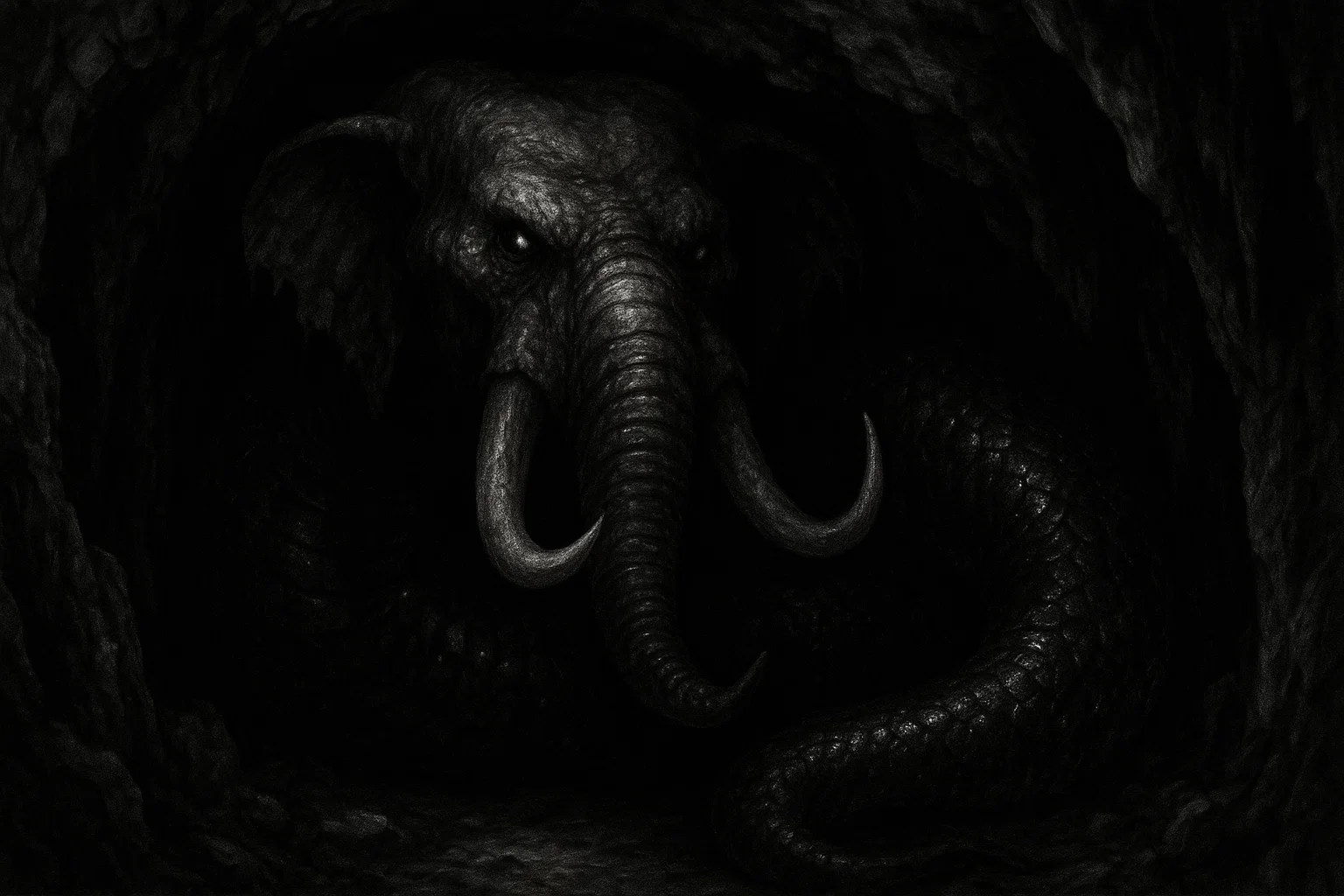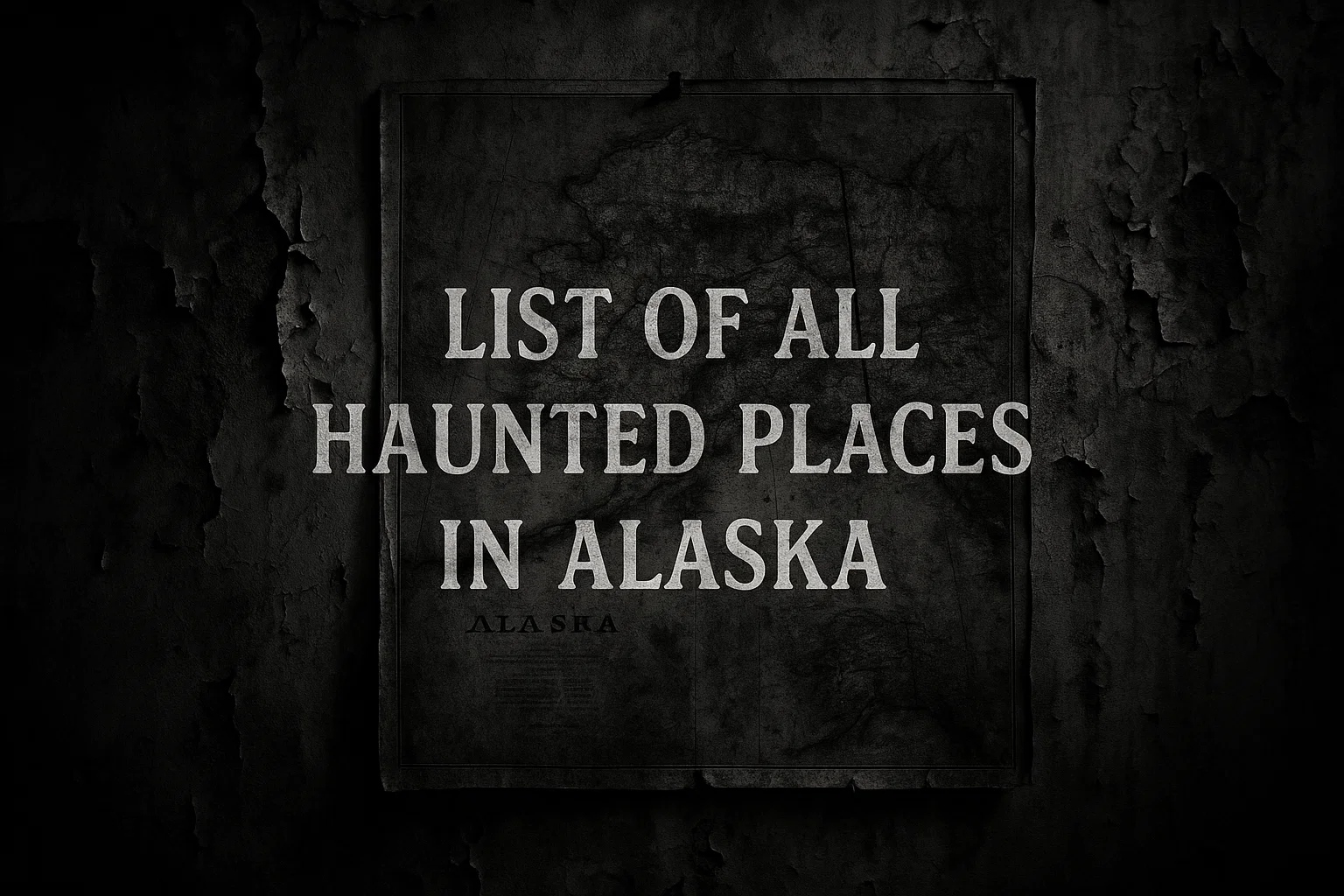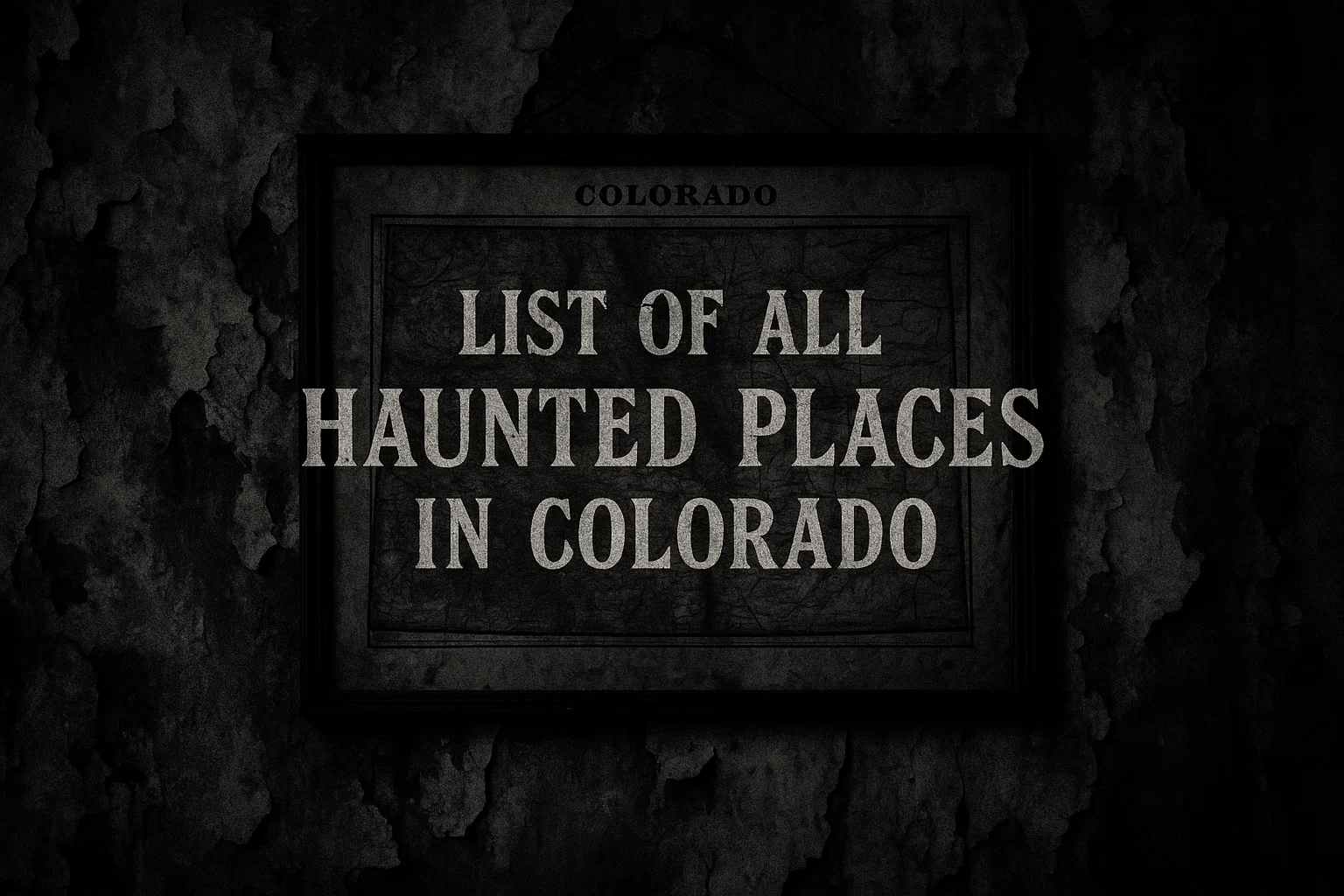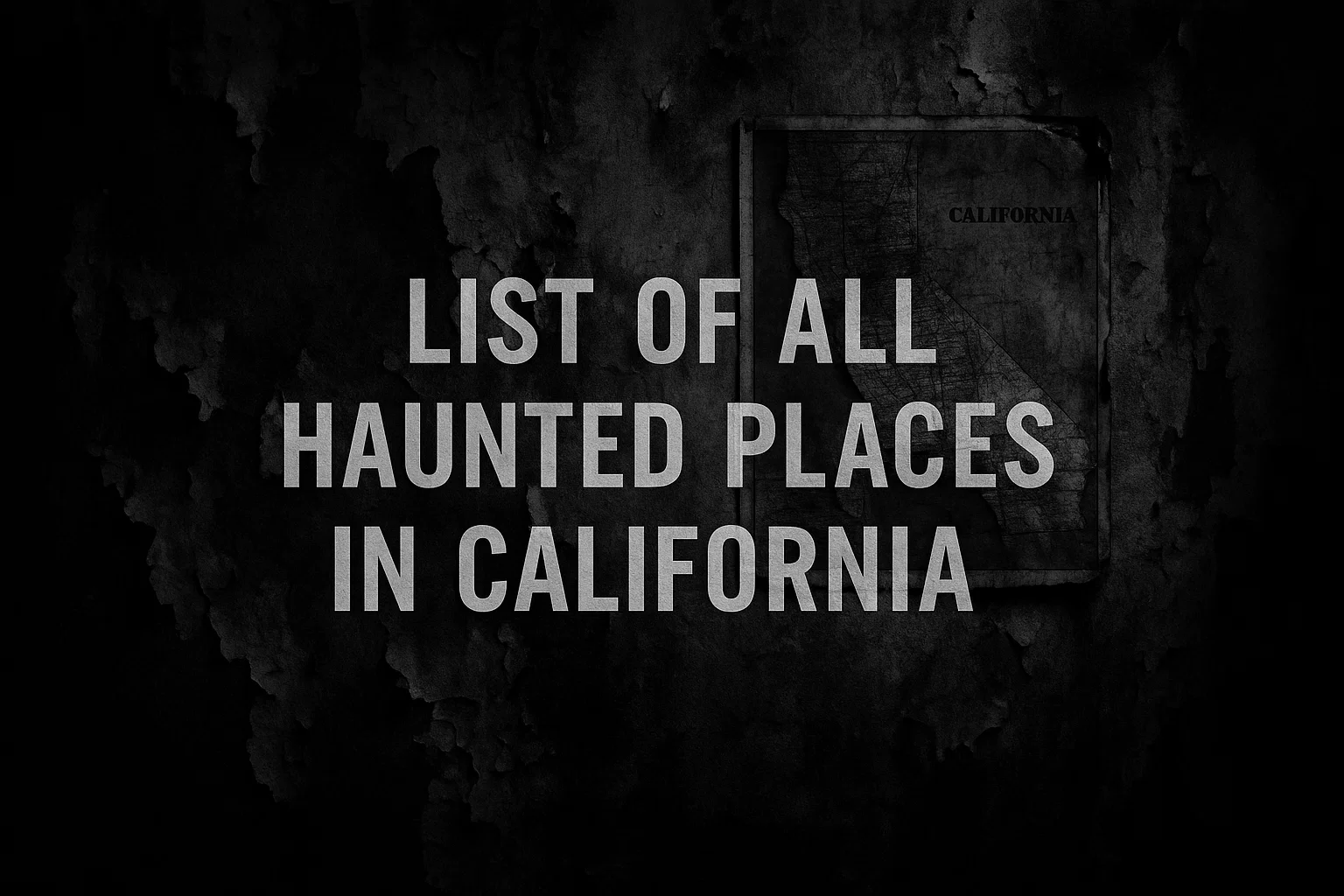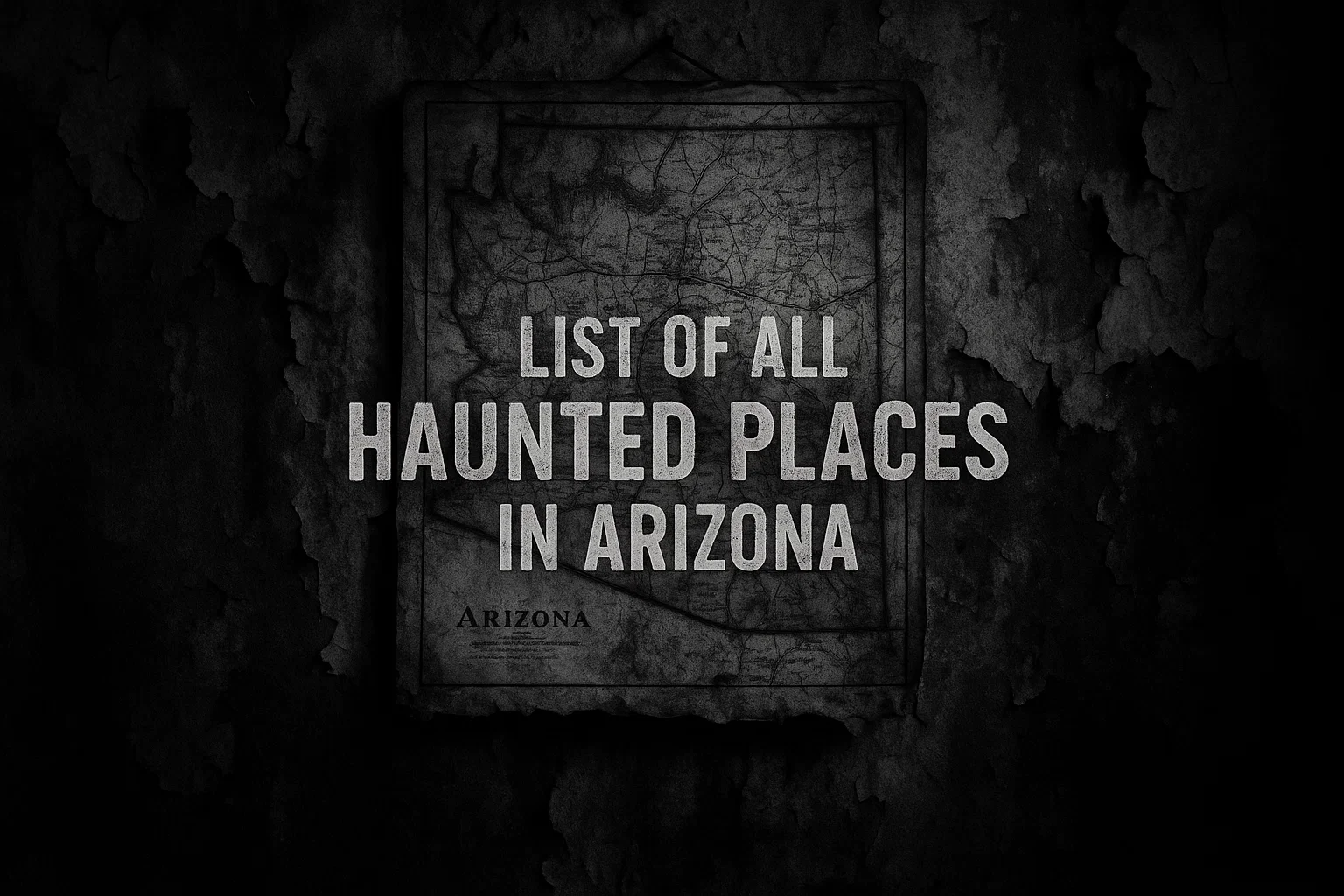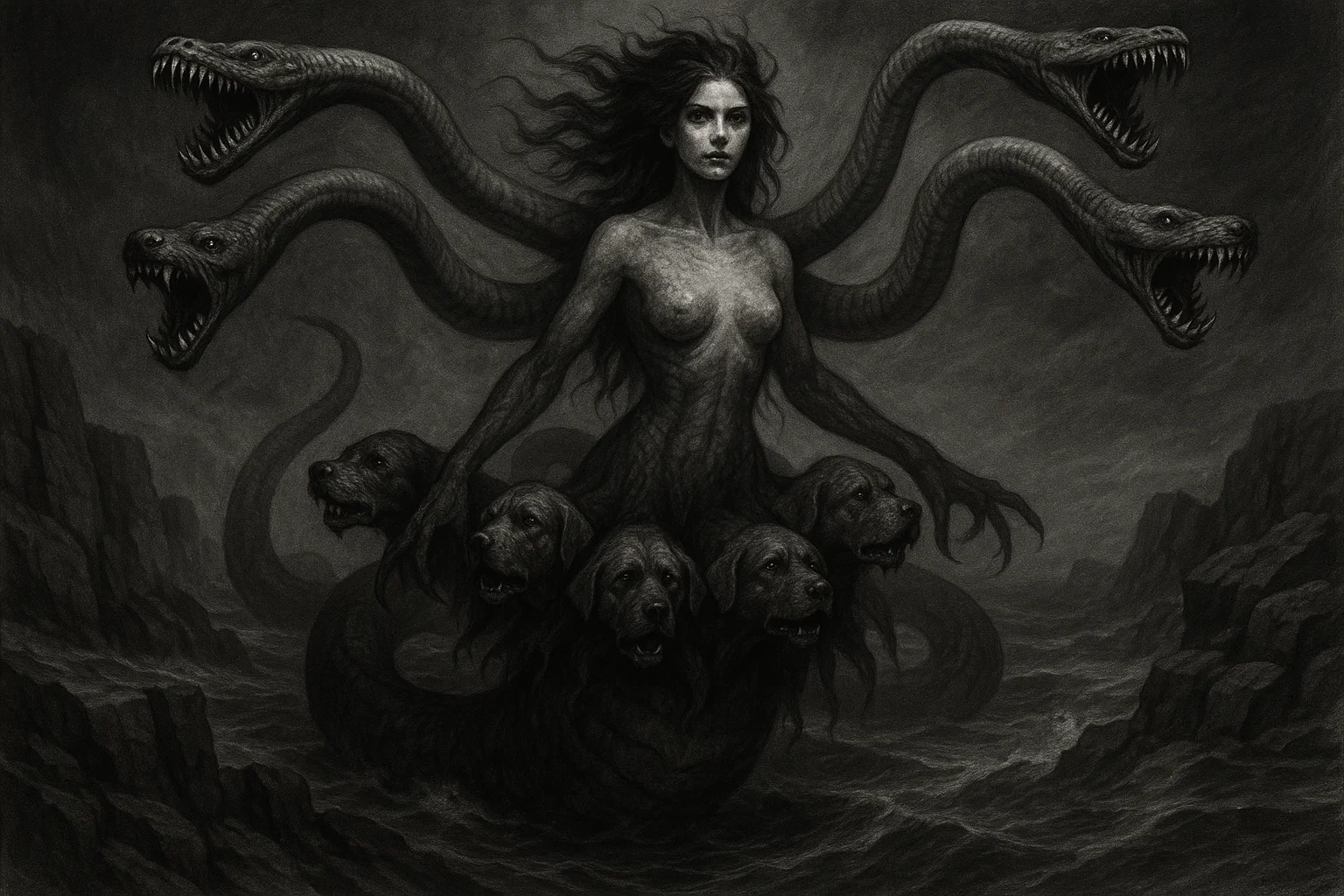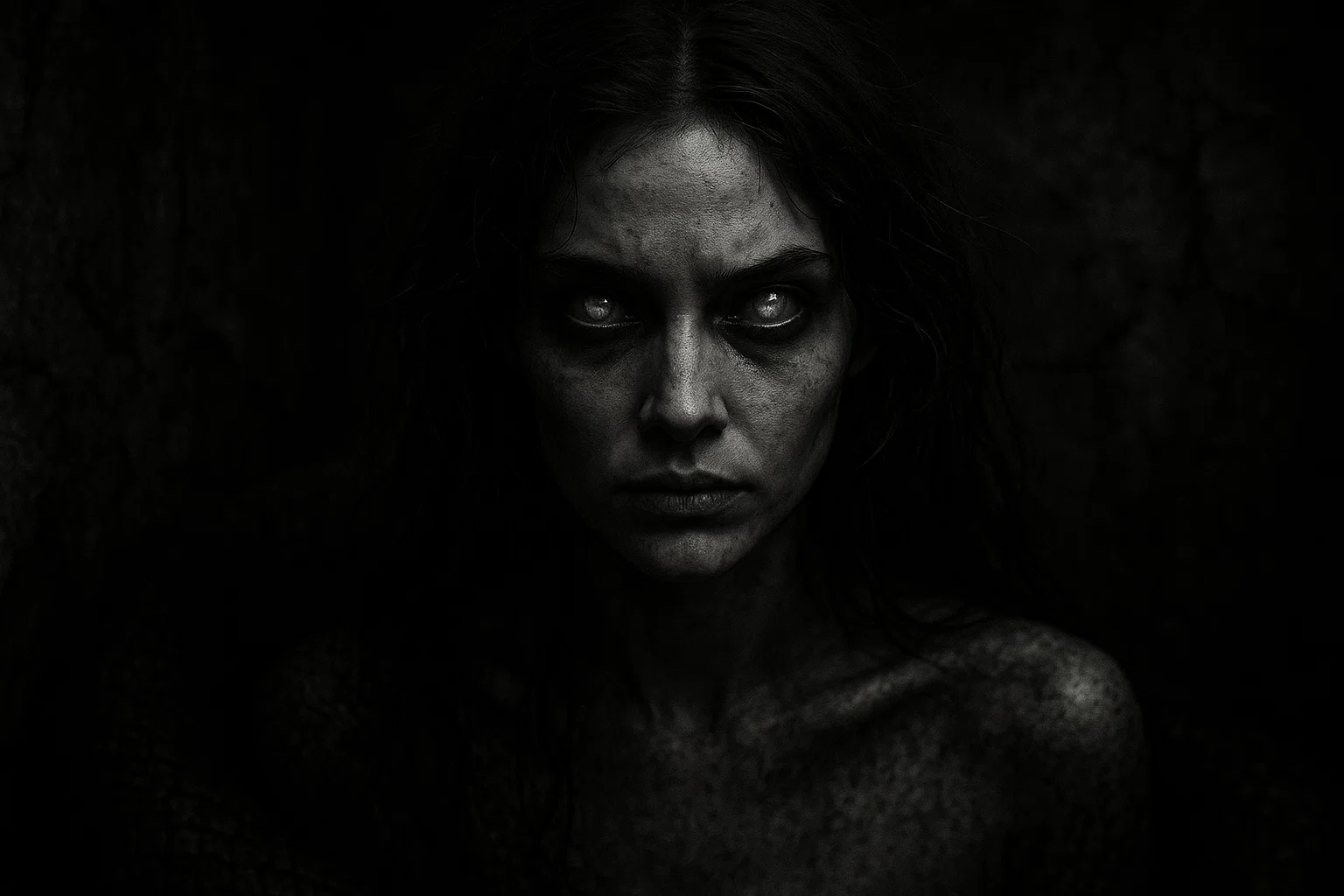Deep in the desolate Richtersveld of South Africa, where jagged rocks meet the endless flow of the Orange River, whispers of a legendary creature persist—a being so ancient and formidable it defies comprehension.
The Grootslang, a name meaning great snake in Afrikaans, is a cryptid that has haunted the imaginations of locals, explorers, and cryptozoologists for centuries.
Known as a guardian of diamonds and a terror of the Northern Cape, this serpentine behemoth is said to lurk in shadowy caves and turbulent waters, its presence tied to tales of greed, mystery, and the supernatural. Is it a relic of a prehistoric past, a product of folklore, or something else entirely? Is the Grootslang monster real?
Summary
What Is Grootslang?
The Grootslang is a legendary creature rooted in the mythology of South Africa, particularly among the Khoekhoe and San peoples of the Northern Cape. Its name, derived from Afrikaans and Dutch, translates to great snake, reflecting its primary form as a massive serpent.
According to indigenous lore, the Grootslang was one of the first creatures created by the gods during the dawn of existence. Endowed with extraordinary strength, intelligence, and cunning, it was a being of unparalleled power.
However, its dangerous nature alarmed the gods, who deemed it too formidable to roam freely. In an act of divine intervention, they split the Grootslang into two separate species: elephants, embodying its strength and size, and snakes, inheriting its serpentine form and stealth.
Yet, one original Grootslang escaped this division, retreating to the depths of the earth, where it is said to have spawned others of its kind.
Beyond its mythological origins, the Grootslang is intricately tied to the Richtersveld’s diamond deposits. It is often described as a guardian of a subterranean treasure trove, particularly in a cave known as the Wonder Hole or Bottomless Pit.
This cavern, rumored to be filled with precious gems, is said to be the Grootslang’s lair, where it lures unsuspecting victims—both human and animal—with its hypnotic allure. Some tales claim the creature uses diamonds to mesmerize its prey, while others suggest its very eyes are gem-like, glowing with an otherworldly light.
The Grootslang is not merely a monster but a symbol of greed and the perils of seeking wealth in forbidden places. Its legend has been passed down through generations, blending oral traditions with accounts of explorers and prospectors who ventured into the Richtersveld in search of riches, only to encounter a creature of terrifying majesty.
The Grootslang also holds a unique place in cryptozoology, where it is studied as a potential undiscovered species. Its hybrid nature—combining traits of reptiles and mammals—sets it apart from other cryptids. While some dismiss it as a folktale, others believe it could be a remnant of a prehistoric lineage, surviving in the remote corners of South Africa.
Its story has been amplified by colonial accounts and modern media, including appearances in animated series like The Secret Saturdays, where it is depicted as a fearsome predator with both serpentine and elephantine features.
What Does Grootslang Look Like?
The Grootslang’s appearance is a blend of awe-inspiring and terrifying features, drawn from both folklore and eyewitness descriptions. At its core, it is a colossal serpent, with accounts estimating its length at 40 to 50 feet or more, and a body as wide as 3 feet in diameter.
Its scales are described as jet-black or dark green, shimmering with a metallic sheen that reflects the dim light of its subterranean or aquatic haunts. The creature’s head is often depicted as disproportionately large, with some accounts suggesting elephant-like features, such as a trunk or tusks, reflecting its mythological origins as a hybrid of elephants and snakes.
Its eyes are a focal point of many descriptions, said to be large, luminous, and gem-like, possibly resembling diamonds or glowing with an eerie phosphorescence that mesmerizes onlookers.
You May Also Like: 1936 Photo Proof? Brown Lady Haunts Raynham Hall
Traditional accounts emphasize the Grootslang’s serpentine form, with a sinuous body capable of coiling around prey or moving swiftly through water. Its strength is legendary, with tales claiming it can crush elephants or capsize boats with ease.
Some reports describe a forked tongue and sharp fangs, while others mention a prehensile tail used to ensnare victims. In rare instances, the creature is said to have a musky odor or to emit a hiss so loud it reverberates through caves.
Modern interpretations, particularly in popular culture, have added embellishments, such as ram-like horns or spiked tails, as seen in The Secret Saturdays, though these are less common in indigenous lore.
The Grootslang’s physicality is not just about size but also its aura of menace. Witnesses often report a palpable sense of dread when encountering it, as if the creature exudes an almost supernatural presence.
Its ability to move between land and water, combined with its intelligence—evidenced by its reputed ability to lure elephants into its lair—makes it a uniquely formidable cryptid.
These characteristics distinguish the Grootslang from other serpentine cryptids, cementing its place as a creature of both myth and mystery.
Habitat: The Mystical Richtersveld
The Grootslang’s primary habitat is the Richtersveld, a stark and unforgiving region in South Africa’s Northern Cape province. This desert landscape, spanning approximately 5,900 square kilometers, is characterized by rugged mountains, rocky outcrops, and sparse vegetation, including succulents and hardy shrubs adapted to the arid climate.
The Orange River, a lifeline in this desolate terrain, flows through the region, providing a potential aquatic environment for a creature like the Grootslang. The Wonder Hole, also known as the Bottomless Pit, is the creature’s most famous lair.
Located near Annisfontein spring, roughly 3 miles from the Orange River, this cave is said to descend 60 feet before branching into a labyrinth of steep passages. Explorers have reported a sulfur-like stench emanating from its depths, and local legends claim it connects to the sea, some 64 kilometers away, through an underground channel.
Another significant location is Augrabies Falls, where the Orange River plunges through the King George Cataract. This turbulent waterfall, with its misty gorges and deep pools, is an ideal setting for a semi-aquatic cryptid.
The Vaal Dam in the Free State Province and certain deep pits in the Congo have also been mentioned in connection with the Grootslang, though these are less substantiated.
The Richtersveld’s isolation—with minimal human settlements and limited infrastructure—enhances its mystique, making it a plausible hideout for an elusive creature. The region’s mineral wealth, particularly its diamond deposits, ties directly into the Grootslang’s role as a guardian of treasure, with the Wonder Hole rumored to house a cache of precious gems.
The Richtersveld has a long history of unexplained phenomena that may bolster the Grootslang legend. Khoekhoe and San oral traditions speak of supernatural beings and spirits inhabiting the region’s caves and rivers, often linked to ancestral guardians or malevolent entities.
The Wonder Hole itself is steeped in local folklore, with stories of disappearances and strange noises predating modern cryptid accounts. The area’s geological anomalies, such as caves and sinkholes, have fueled speculation about hidden ecosystems that could support an unknown species.
Other cryptids reported in the region include sightings of giant birds and humanoid figures, though these are less documented than the Grootslang.
The Richtersveld’s history as a frontier for colonial prospectors in the 19th and early 20th centuries also contributed to its reputation for the unexplained, as explorers often returned with tales of monstrous creatures and cursed treasures.
Grootslang Sightings
The Grootslang has been the subject of numerous alleged sightings, primarily in the Richtersveld and along the Orange River. These accounts, spanning from the 1860s to the 1960s, involve a range of witnesses, from indigenous locals to colonial prospectors.
Below is a comprehensive table summarizing all known alleged sightings:
| Date | Location | Witness(es) | Description |
|---|---|---|---|
| 1867 | Orange River, Richtersveld | Unknown locals | Early report of a giant serpent terrorizing fishermen along the river. |
| 1869 | Wonder Hole, Richtersveld | Khoekhoe herders | Observed a massive snake emerging from the cave, coiling near the entrance. |
| 1890s | Orange River, near Augrabies Falls | Local fishermen | Reported a huge serpent capsizing boats and creating large waves. |
| 1907 | Wonder Hole, Richtersveld | Hans Sauer | Encountered a colossal serpent with glowing eyes while exploring the cave. |
| 1910 | Pool near Augrabies Falls | Frederick C. Cornell | Saw a serpentine creature raising its head 12 feet above water, attacking. |
| 1910 | Orange River, Richtersveld | Lt. Fred Cornell | Used dynamite to flush a giant snake from a rock, fired at it with a rifle. |
| 1917 | Richtersveld, near Wonder Hole | Peter Grayson (and party) | Disappeared while searching for diamonds; rumored killed by the Grootslang. |
| 1920 | Orange River, Richtersveld | Lt. Fred Cornell | Second encounter with a massive serpent while prospecting for emeralds. |
| 1932 | Augrabies Falls | G.A. Kinnear | Witnessed a large snake-like creature in the cataract, moving swiftly. |
| 1945 | Vaal Dam, Free State | Local farmer | Reported a huge serpent in the dam, causing livestock to disappear. |
| 1950s | Orange River, near Richtersveld | Multiple fishermen | Sporadic sightings of a giant water serpent attacking boats and livestock. |
| 1963 | Richtersveld, near Wonder Hole | Unknown prospectors | Newspaper report of a monstrous snake sighting, sparking local panic. |
Hans Sauer’s Encounter at the Wonder Hole (1907)
In 1907, Hans Sauer, a South African prospector and physician, ventured into the Wonder Hole in search of diamonds. According to his account, he descended into the cave and encountered a colossal serpent with glowing eyes that seemed to emit a hypnotic light.
Sauer described the creature as over 40 feet long, with black scales and a musky odor that filled the air. Frightened, he fled the cave, later recounting the experience to local Khoekhoe communities, who confirmed the creature’s identity as the Grootslang.
This sighting is significant for its detailed description and Sauer’s credibility as a witness, though no physical evidence was recovered.
Lt. Fred Cornell’s First Encounter (1910)
In 1910, Lt. Fred Cornell, a seasoned prospector, reported a dramatic encounter near Augrabies Falls. While exploring a pool along the Orange River, he observed a serpentine creature raising its head 12 feet above the water.
You May Also Like: She Crawls at Midnight: The Teke Teke Legend
The creature, described as having dark scales and piercing eyes, lunged toward his party, forcing them to retreat. Later that year, Cornell used dynamite to dislodge what he believed was the same creature from a rock formation in the river, firing at it with his rifle.
The creature escaped, leaving no trace, but Cornell’s detailed account added weight to the Grootslang legend.
Peter Grayson’s Disappearance (1917)
The most infamous Grootslang incident occurred in 1917, when Peter Grayson, an English businessman, led a party into the Richtersveld to search for diamonds in the Wonder Hole.
Grayson and his companions vanished without a trace, prompting speculation that they were killed by the Grootslang. Local Khoekhoe guides warned Grayson of the creature’s presence, but he dismissed their concerns.
Some accounts suggest lion attacks as an alternative explanation, but the absence of bodies or equipment fueled the Grootslang narrative, making this one of the most enduring stories associated with the cryptid.
G.A. Kinnear’s Sighting at Augrabies Falls (1932)
In 1932, G.A. Kinnear, a South African explorer, reported seeing a large snake-like creature in the King George Cataract at Augrabies Falls. Kinnear described the creature as moving swiftly through the turbulent waters, its black body briefly visible above the surface.
He estimated its length at over 30 feet and noted its aggressive behavior as it churned the water, creating large waves. Kinnear’s account, though brief, aligns with earlier descriptions and adds to the Grootslang’s reputation as a water-dwelling predator.
Vaal Dam Sighting (1945)
In 1945, a local farmer near the Vaal Dam in the Free State reported a huge serpent in the water, which he believed was responsible for the disappearance of livestock. The creature was described as dark green with a massive head and glowing eyes.
The farmer claimed it emerged from the dam at dusk, coiling on the shore before retreating.
This sighting, though isolated, suggests the Grootslang legend may extend beyond the Richtersveld, possibly reflecting similar folktales in other regions.
Newspaper Frenzy (1963)
In 1963, a newspaper report detailed a sighting of a monstrous snake near the Wonder Hole, sparking widespread panic in the Richtersveld. The report, based on accounts from prospectors, described a giant serpent emerging from the cave, causing locals to avoid the area.
While no specific witnesses were named, the incident reignited interest in the Grootslang, prompting amateur cryptozoologists to explore the region. No evidence was found, but the event underscored the legend’s enduring hold on the public imagination.
Evidence
The Grootslang remains one of cryptozoology’s most elusive subjects, with no definitive physical evidence to confirm its existence. Despite numerous eyewitness accounts spanning over a century, tangible proof such as footprints, photographs, videos, or biological samples has yet to surface. However, several reported findings have fueled speculation about the creature’s reality.
One of the most frequently cited pieces of potential evidence is the sulfur-like odor reported in the Wonder Hole, the Grootslang’s reputed lair in the Richtersveld. Explorers, including Hans Sauer in 1907, described a pungent stench emanating from the cave’s depths, which some cryptozoologists suggest could indicate the presence of a large reptilian creature.
Similar odors have been associated with large snakes, such as the African rock python, due to their musk or decomposing prey. However, no chemical analysis of the Wonder Hole’s air has been conducted to verify this claim.
Another piece of anecdotal evidence involves disturbed terrain near the Orange River and Augrabies Falls. Witnesses, including Lt. Fred Cornell in 1910, reported large tracks or drag marks in the riverbed mud, approximately 3 feet wide, consistent with the Grootslang’s described track width. These marks were often attributed to the creature’s serpentine body slithering through the sediment.
You May Also Like: Who Is the Demon Amy (Avnas), the Fiery President of Hell?
However, no casts or detailed measurements of these tracks were made, and they could easily be explained by natural phenomena like erosion or the movement of large logs during floods.
In 1963, a newspaper report claimed that prospectors found unusually large scales near the Wonder Hole, described as black, shiny, and tough. These were speculated to belong to the Grootslang, but no samples were preserved for scientific study, and skeptics suggest they could have been from a large python or even a monitor lizard.
Similarly, tales of diamond-encrusted artifacts found near the Wonder Hole have circulated, with locals claiming the Grootslang leaves gems as bait. These stories, while compelling, lack verifiable documentation and are likely embellishments tied to the region’s diamond mining history.
The absence of photographic or video evidence is a significant barrier to proving the Grootslang’s existence. While modern technology was not available during early sightings, later accounts from the 1950s and 1960s also failed to produce images, despite increased access to cameras.
This lack of visual documentation suggests that sightings may have been fleeting or misinterpretations of known animals. Additionally, no fossils or skeletal remains matching the Grootslang’s described hybrid features have been found in the Richtersveld’s geological record, further weakening claims of a prehistoric survivor.
Investigations
Efforts to investigate the Grootslang have been limited, primarily due to the Richtersveld’s remote and inhospitable terrain. However, several notable expeditions and inquiries have attempted to uncover the truth behind the legend.
In the early 20th century, colonial prospectors like Hans Sauer and Lt. Fred Cornell conducted informal investigations while searching for diamonds and emeralds.
Sauer’s 1907 exploration of the Wonder Hole aimed to verify local Khoekhoe tales of a guardian serpent. His encounter with a colossal snake and subsequent retreat provided anecdotal support but no concrete evidence.
Similarly, Cornell’s 1910 and 1920 expeditions along the Orange River involved direct confrontations with the creature, including the use of dynamite to flush it out. Despite these efforts, Cornell’s accounts rely solely on his testimony, with no physical proof to substantiate his claims.
In 1917, the disappearance of Peter Grayson and his party prompted a brief investigation by local authorities. Search parties scoured the Richtersveld but found no trace of Grayson, his companions, or the Grootslang.
The incident was officially attributed to lion attacks or banditry, but local lore insisted the Grootslang was responsible, leading to increased interest in the creature. No formal scientific expedition followed, likely due to the region’s inaccessibility and the lack of credible evidence.
In the 1960s, a surge of interest in the Grootslang followed a 1963 newspaper report of a monstrous snake sighting near the Wonder Hole. Amateur cryptozoologists and treasure hunters ventured into the Richtersveld, equipped with basic tools and cameras, but their efforts yielded no definitive findings.
Some reported hearing strange hisses or low rumbles from the cave, which they attributed to the Grootslang, but these could have been caused by geological activity or wind currents. The South African government has never funded an official investigation, and the Richtersveld’s status as a protected area limits large-scale exploration.
More recently, cryptozoological societies have expressed interest in the Grootslang, but no major expeditions have been documented since the 1960s.
The Wonder Hole’s dangerous conditions—including steep inclines, unstable rocks, and limited oxygen—deter most researchers. Modern technologies like drones or thermal imaging could potentially explore the cave’s depths, but no such studies have been conducted, leaving the Grootslang’s existence untested by contemporary science.
Theories
Several theories attempt to explain the Grootslang’s origins, each offering insights into its plausibility while grappling with the lack of physical evidence.
Misidentification of Known Animals
Likelihood: High
Supporting Evidence: The African rock python (Python sebae), native to South Africa, can grow to 25 feet and is known for its strength and stealth.
Its ability to inhabit caves and waterways aligns with the Grootslang’s described habitats, such as the Wonder Hole and Orange River. Witnesses like Lt. Fred Cornell may have mistaken a large python for a mythical creature, especially in the Richtersveld’s dimly lit environments.
You May Also Like: El Silbón: Why Locals Say Its Whistle Means Death Is Near
Similarly, water monitor lizards (Varanus niloticus), which can reach 10 feet, could explain some sightings, particularly those involving aquatic behavior. The sulfur-like odor reported in the Wonder Hole could be attributed to python musk or decomposing prey.
Challenges: Pythons and monitors lack the immense size (40–50 feet) and elephantine features described in some accounts. The Grootslang’s reported intelligence and treasure-guarding behavior also exceed the capabilities of known reptiles.
Additionally, the consistency of sightings across decades suggests something more than random misidentifications.
Mythological and Cultural Origins
Likelihood: High
Supporting Evidence: The Grootslang’s story originates in Khoekhoe and San mythology, where it is depicted as a primordial creature created by the gods. This narrative aligns with indigenous beliefs about guardian spirits protecting natural resources, particularly diamonds in the Richtersveld.
The Wonder Hole’s association with treasure and danger mirrors folktales warning against greed. Colonial prospectors like Hans Sauer may have adopted these stories, interpreting encounters with large snakes through the lens of local lore.
The Grootslang’s hybrid features (elephant and snake) reflect mythological symbolism rather than biological reality.
Challenges: This theory struggles to explain eyewitness accounts from non-indigenous observers unfamiliar with Khoekhoe traditions. The specificity of descriptions, such as glowing eyes and immense size, suggests a basis in real encounters rather than purely cultural allegory.
Prehistoric Survivor Hypothesis
Likelihood: Low
Supporting Evidence: The Richtersveld’s geological stability and remote caves could theoretically harbor a relict population of a prehistoric reptile, such as a mosasaur or an unknown giant snake. The Grootslang’s aquatic and subterranean habits align with environments where extinct species might survive.
Some cryptozoologists point to Titanoboa, a prehistoric snake that grew to 40 feet, as a possible ancestor. The Wonder Hole’s rumored connection to the sea could support a marine reptile theory.
Challenges: No fossils or skeletal remains of such a creature have been found in South Africa. The Grootslang’s hybrid features do not match any known prehistoric species, and the Richtersveld’s distance from the sea makes a marine reptile unlikely. The absence of biological evidence after centuries of sightings further undermines this hypothesis.
Psychological and Environmental Factors
Likelihood: Moderate
Supporting Evidence: The Richtersveld’s eerie landscape, with its jagged rocks, dark caves, and sulfur smells, could induce pareidolia or hallucinations, especially in fearful or fatigued explorers.
The Wonder Hole’s acoustics may amplify natural sounds like wind or water, creating the illusion of hisses or rumbles. Cultural expectations of a guardian serpent could prime witnesses to misinterpret large pythons or river currents as the Grootslang.
Challenges: The consistency of eyewitness accounts across different witnesses—Khoekhoe herders, colonial prospectors, and modern fishermen—suggests more than psychological phenomena. Specific details, such as track widths and glowing eyes, are difficult to attribute solely to environmental factors.
Hoax or Exaggeration
Likelihood: Moderate
Supporting Evidence: Some Grootslang stories, particularly those tied to diamond prospecting, may have been exaggerated to deter competitors or attract attention.
The 1963 newspaper report sparked a media frenzy, possibly amplifying unverified claims. Prospectors like Peter Grayson may have fabricated or embellished encounters to enhance their reputation or justify failed expeditions.
Challenges: The Grootslang’s legend predates colonial prospecting, rooted in indigenous oral traditions. The consistency of sightings across cultures and time periods suggests a shared experience rather than a coordinated hoax.
You May Also Like: What Is Momo the Monster? Missouri’s Creepiest Legend
Comparison With Other Similar Cryptids
The Grootslang shares traits with other serpentine cryptids worldwide, particularly those associated with water or caves:
| Cryptid Name | Location | Physical Description | Evidence/Sightings |
|---|---|---|---|
| Mokele-Mbembe | Congo | Long-necked, dinosaur-like | Expeditions, no conclusive evidence |
| Loch Ness Monster | Scotland | Serpentine, with humps | Thousands of sightings, sonar readings |
| Ogopogo | Canada | Serpentine lake creature | Sightings since 19th century, photos |
| Cadborosaurus | Canada | Sea serpent with horse-like head | Sightings, strandings reported |
| Lambton Worm | England | Monstrous serpent | No modern sightings, folklore-based |
| Mongolian Death Worm | Mongolia | Red, sausage-like serpent | Local legends, no evidence |
| Hook Island Sea Monster | Australia | Large sea serpent with mane | Photograph, no further evidence |
| Colossal Claude | USA (Oregon) | Sea serpent in Columbia River | Mid-20th century sightings |
| Aiatar | Finland | Large evil serpent | Folklore, no physical evidence |
| Tsuchinoko | Japan | Small, venomous, snake-like | Sightings, no scientific verification |
| Bunyip | Australia | Aquatic, seal-like or serpentine | 19th-century sightings, no evidence |
Is Grootslang Real?
The Grootslang remains an enigma, its existence unproven yet persistently captivating. The absence of physical evidence—no fossils, photographs, or DNA—suggests it may be a product of misidentification and cultural mythology.
Yet, the consistency of eyewitness accounts, from Khoekhoe herders to colonial prospectors, hints at something extraordinary in the Richtersveld. The region’s unexplored caves, geological anomalies, and isolation keep the possibility of an undiscovered species alive, however remote.
The Grootslang’s legend, blending indigenous lore with tales of greed and treasure, serves as a powerful metaphor for the dangers of the unknown.
Whether a python, a myth, or something yet to be discovered, the Grootslang continues to slither through the shadows of South Africa’s imagination, a testament to the enduring allure of the unexplained.

